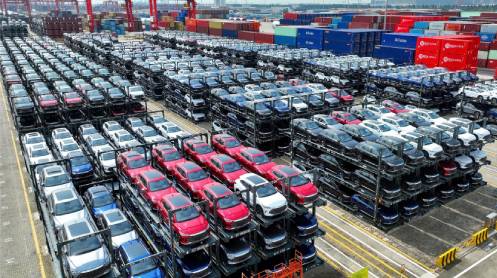THE continuing political circus is distracting from the intense monsoon, the worst in three decades. Public and media attention is rightly focused on the devastation — 550 dead, infrastructure washed away, acute food and water shortages, especially dire in Balochistan. But we are still not doing enough to connect this devastation with broader climate change discourse, using the grim circumstances to, at the very least, increase awareness.
The 2012 National Climate Change Policy called for more climate change awareness, including the introduction of a climate curriculum. But we remain far off from a holistic approach to widespread climate literacy.
Initiatives such as WWF’s Green Schools, WaterAid’s Clean Green School Programme and the Nottingham Business School/UN PRME Champions’ Carbon Literacy Training represent a patchy start. Focused on the formal sector, and typically English-medium schools, these initiatives increase awareness about climate change, recycling, tree planting and water conservation, largely in urban contexts. This civic-centric approach, focused on individual behavioural changes to limit emissions, will be increasingly relevant in a rapidly urbanising Pakistan. But it is not close to enough.
Climate literacy in Pakistan varies hugely. A 2021 survey by the Ministry of Climate Change, Viamo and UNDP found that 43 per cent of young people (aged 19-34) with digital access had a high degree of understanding of climate change. That figure dropped to 10pc among those without smartphones. But even those with higher awareness knew little about the government initiatives to tackle climate change; only 24pc surveyed knew about the ‘Ten Billion Tree Tsunami’. Meanwhile, a 2020 study by Fahad et al on farm households in four KP districts found that 73pc were aware of climate change, and that most were deploying adaptation strategies.
Boosting climate literacy must be an urgent priority. The UN has long emphasised “action for climate empowerment”, which encompasses education, recognising that only informed people can build the skills and tactics required for adaptation and resilience. The key is not to conflate carbon literacy with climate literacy.
Pakistan’s challenge will be to develop myriad education and awareness initiatives to target different constituencies based on how they are likely to be affected. These initiatives must be inclusive, region-specific, and focused on adaptation and resilience. And they must build public momentum to make climate change a top political priority.
For example, we must acknowledge that girls and women — among the most vulnerable to climate change — are less likely to be targeted by climate curricula in the formal school system. But they are key to identifying changes and stresses in local environments. They must be informed in a timely way to help them change practices and also empowered to share learnings from their experiences. In this context, climate literacy is probably best spread through community workshops rather than a formal carbon-focused curriculum.
Where formal curriculums are imparted, they must be regionalised. For example, any climate literacy project in Gilgit Baltistan must focus on the importance of tree cover to limit flood damage caused by glacial melt, and denounce the practice of illegal tree logging.
Key constituencies such as local government officials need crash courses to boost climate literacy. A 2016 study by Awais Piracha found that only 6pc of union council representatives tasked with planning initiatives in Punjab had high climate literacy. They had some awareness about the consequences of climate change in the form of food and water scarcity, but had no idea what to do with this scant knowledge. Any climate literacy initiative for government officials must include training and awareness on international initiatives as well as technologies available to map and manage regional climate vulnerabilities.
While such targeted interventions are essential, Pakistan ultimately needs a broad-based plan to ensure that all citizens understand the magnitude of the climate crisis, and how it will affect them in the years to come. For this, mosques and madressahs must be mobilised to pick up the climate agenda.
There is precedent for this. The 2015 Islamic Declaration on Climate Change called on Muslims to phase out fossil fuels and take up renewables by 2050. A Clean Energy Mosques Campaign launched in 2016 calls on mosques to practise energy conservation and set a good example. Water-scarce Jordan is one example of a Muslim country where imams refer to Sharia law to speak against pollution and mosques largely use renewable energy sources. Perhaps our prayers for the victims of the recent floods can also be accompanied by green fatwas. It will take all efforts to build climate literacy and protect Pakistanis from inevitable, recurring climate devastation.







